Arts craft house
What Is an Arts and Crafts Style House?
Arts and Crafts doesn’t refer to one particular house style, but to an entire architectural movement that initially emerged in Great Britain during the second half of the 19th century. This movement was a direct response to the Industrial Revolution which radically transformed, with architects and artists pushing back against cold “futuristic” designs, and rejecting inferior mass-produced goods and materials in favor of traditional artisan-crafted ones.
Unlike typical British Victorian architecture, which focused on extravagant architecture and ornate details, the Arts and Crafts movement celebrated the beauty of the natural world, and was meant to harken back to a preindustrial world of simplicity. This creative ethos was applied to many creative pursuits besides architecture, including landscape design, furniture, and interior styling,
Here's what you should know about how this style came to be, its key characteristics, and what to expect in Arts and Crafts-influenced homes.
The earliest homes of the Arts and Crafts movement were designed to evoke centuries-old dwellings, using building materials with roots in the natural world: Wood, stucco, stone, and rustic brick are the most common materials used for siding.
Inside, the layout of Arts and Crafts homes are designed for function above all else: featuring plenty of open space, and plenty of large windows to allow for sunlight. Arts and Crafts houses don’t limit the use of exposed natural elements to the exterior; inside, you’ll find accents of handcrafted stone or wood, and use built-in architectural features like shelves, seating, and cabinetry to bring the outdoors inside.
On the first floor, an Arts and Crafts-style home will have an open living room that connects to a dining or multi-use space, with a small kitchen toward the rear of the house. In contrast to the well-defined spaces and boxy rooms of Victorian homes, Arts and Crafts homes utilized open floor plans emphasizing practical design that not only allows their owners to easily move about, but also to keep it well-lit and climate-controlled.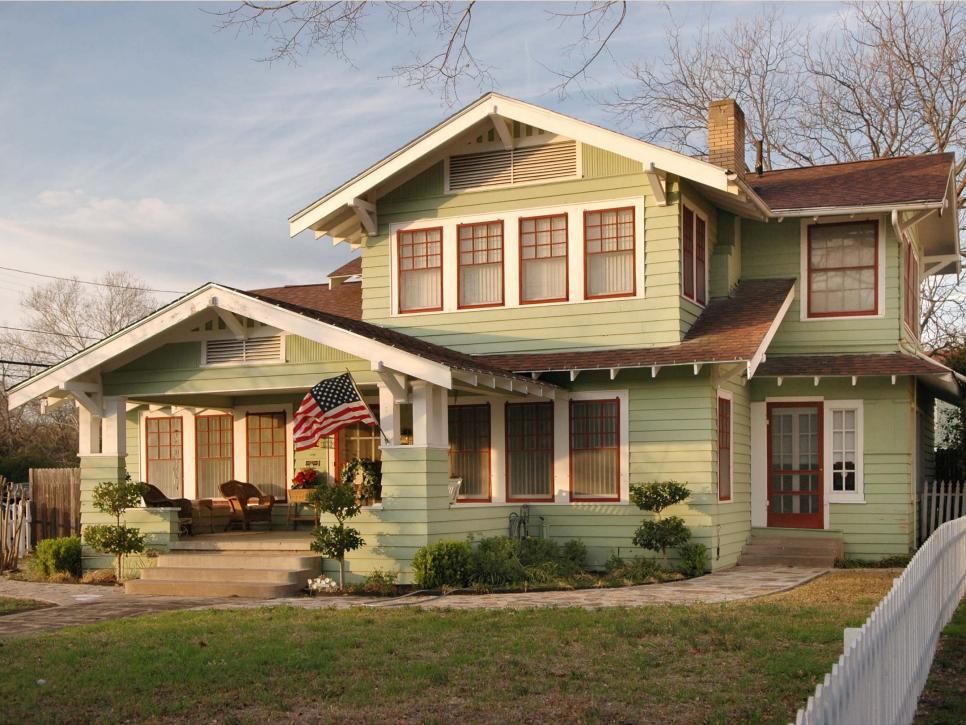 The main living area will feature a fireplace, and if the home has a second story, there will likely be another fireplace in the largest bedroom. Ceilings were kept low to help conserve heat, which adds to the snug, cozy feel of these houses.
The main living area will feature a fireplace, and if the home has a second story, there will likely be another fireplace in the largest bedroom. Ceilings were kept low to help conserve heat, which adds to the snug, cozy feel of these houses.
Here are the common features of Arts and Crafts-style homes.
Exterior:
Interior:
Though the Arts and Crafts Movement began in mid-19th century Britain, its embrace of the handcrafted aesthetics of a pre-industrial world didn’t make its way to the United States until the turn of the 20th century, thanks to a magazine called The Craftsman. In that era, many houses across the country were built using residential blueprints found in magazines; The Craftsman’s simple plans were created by famed Arts and Crafts furniture designer Gustav Stickley, whose simple designs stood in stark contrast to the ornate Victorian styles that were resoundingly popular at the time.
American Arts and Crafts architecture encompasses a number of styles popularized in various issues of Craftsman magazine. If you're a fan of this architecture, you're in luck—because of the wide dissemination of the magazine, these homes were popular from the East Coast to California. These are the most popular styles:
If you're a fan of this architecture, you're in luck—because of the wide dissemination of the magazine, these homes were popular from the East Coast to California. These are the most popular styles:
Craftsman
Joe Shmelzer / Getty Images
Craftsman-style homes are the most quintessentially American-style of the Arts and Crafts movement, and are characterized by wide, low layouts, gabled roofs, open floor plans, wood framing, and front porches that feature support columns and exposed rafters.
Bungalow
Julian Porcino
American bungalow-style homes were designed to be easy to build, which made them affordable for early-20th century working families. A bungalow is a small house that, traditionally, is only one story high, though today it’s common to find ones whose attic space has been converted into a second-story bedroom. Bungalows are raised from the sidewalk with a short flight of steps and feature small verandas, overhanging eaves, and dormer windows.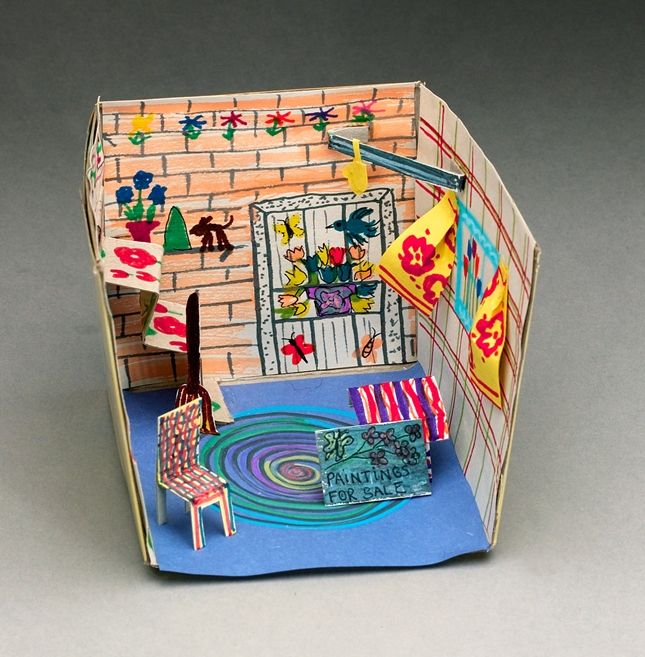 Inside, bungalows use their small space efficiently, with tight, compact closets, built-in cabinets, and shelving.
Inside, bungalows use their small space efficiently, with tight, compact closets, built-in cabinets, and shelving.
Tudor
Jeff Vinnick / Stringer
Originating in Great Britain and popular among the monied classes, Tudor houses — which are sometimes known as Tudor Revival, Mock Tudor, or Jacobean style— are large, multi-story houses made of brick with large sections of half-timbered white stucco siding, giving them a medieval appearance. Tudors have steeply-pitched gabled roofs with decorative chimney pots, narrow, multi-paned windows, and wooden front doors. Inside, Tudor-style homes feature plaster walls, arched doorways, beamed ceilings, and wood details.
A Moody Makeover Totally Transformed This Seattle Tudor-Style Home
What Is an Arts and Crafts Home?
By
Ashley Knierim
Ashley Knierim
Ashley Knierim is a home decor expert and product reviewer of home products for The Spruce.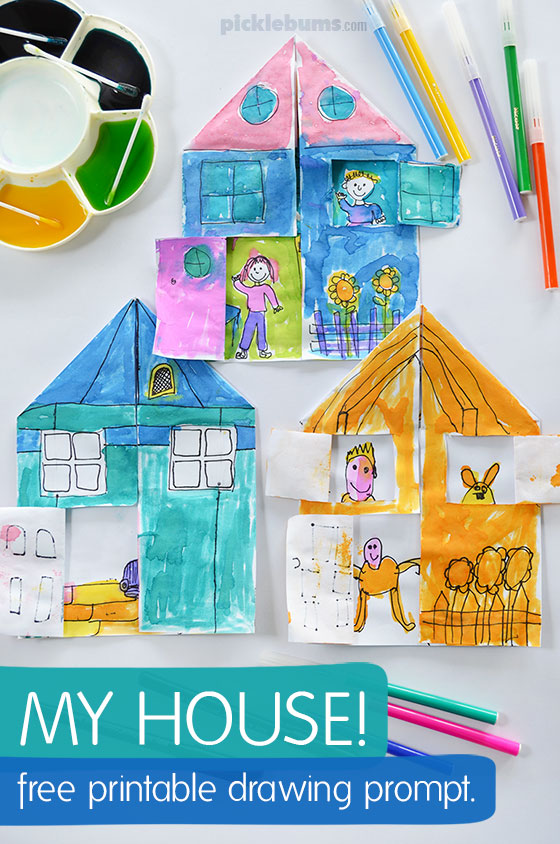 Her design education began at a young age. She has over 10 years of writing and editing experience, formerly holding editorial positions at Time and AOL.
Her design education began at a young age. She has over 10 years of writing and editing experience, formerly holding editorial positions at Time and AOL.
Learn more about The Spruce's Editorial Process
Updated on 02/02/22
Fact checked by
Sarah Scott
Fact checked by Sarah Scott
Sarah Scott is a fact-checker and researcher who has worked in the custom home building industry in sales, marketing, and design.
Learn more about The Spruce's Editorial Process
Arts and Crafts-style homes may be one of the most complex styles of architecture. While there are many key features of an Arts and Crafts home, the style draws similarities from several other architectural aesthetics, making it a little more difficult to pick it out. In older homes. you'll find that Arts and Crafts isn't exactly a single style, but rather a specific approach to many different types of architecture.
The History of Arts and Crafts Homes
As a reaction to the manufactured and ornate styles of the Victorian age, Arts and Crafts-style homes embraced handcrafted design and approachable materials. The style originated in England in the mid-19th century and came to America around the beginning of the 20th century. The term "Arts and Crafts" refers to a broader social movement that encompasses not just architecture, but also interior design, textiles, fine art, and more.
The style originated in England in the mid-19th century and came to America around the beginning of the 20th century. The term "Arts and Crafts" refers to a broader social movement that encompasses not just architecture, but also interior design, textiles, fine art, and more.
The design movement began as a revolt against the opulence of the Industrial Revolution, where design could be needlessly overdone. Arts and Crafts instead focused on the opposite–instead of mass-produced and uninspired, the movement was all about being handcrafted and personal. The idea was that if quality could replace quantity, good design and good taste would prevail.
The Arts and Crafts movement was directly tied to the rise of Craftsman and Bungalow-style homes, architecture that played off of the same mentality of simple but thoughtful structures. Bungalows were intended to give working-class families the ability to own a well-designed home that was easy to maintain and manage.
bungalowsandcottages / Instagram
What Defines an Arts and Crafts Home?
An Arts and Crafts-style home can be symmetrical or asymmetrical in its facade and is typically low to the ground.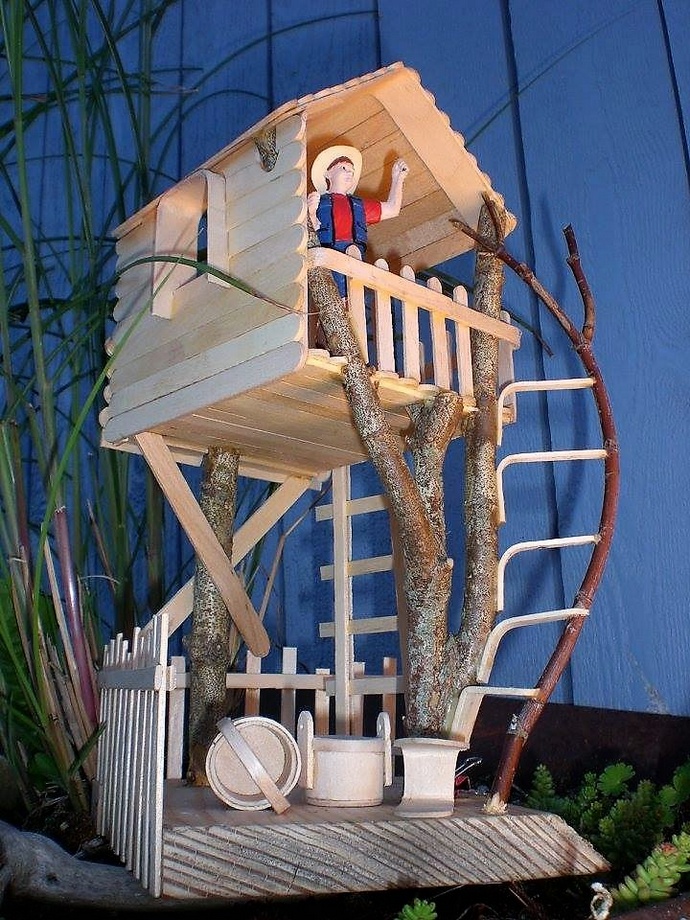 They are designed to use space efficiently and economically, and by nature require little upkeep if planned well. They often feature multiple chimneys and a very prominent "sheltering roof." Windows are plentiful, but often made up of small panes.
They are designed to use space efficiently and economically, and by nature require little upkeep if planned well. They often feature multiple chimneys and a very prominent "sheltering roof." Windows are plentiful, but often made up of small panes.
There are many types of architecture within the Arts and Crafts style, including Craftsman and Bungalows.
Key Elements
When looking at an Arts and Crafts home, you will find a few key elements that transcend across styles.
Roof: The roof of an Arts and Crafts home is typically low pitched, with wide, unenclosed eave overhangs.
Exposed beams: The rafters on the roof and the beams inside the home are often exposed in an Arts and Crafts home.
Built-ins: One key element of this design style is the rise of built-in furniture. The movement brought a wave of built-in bookshelves, window seats, and cabinets that felt custom to the house and perfectly suited to the design.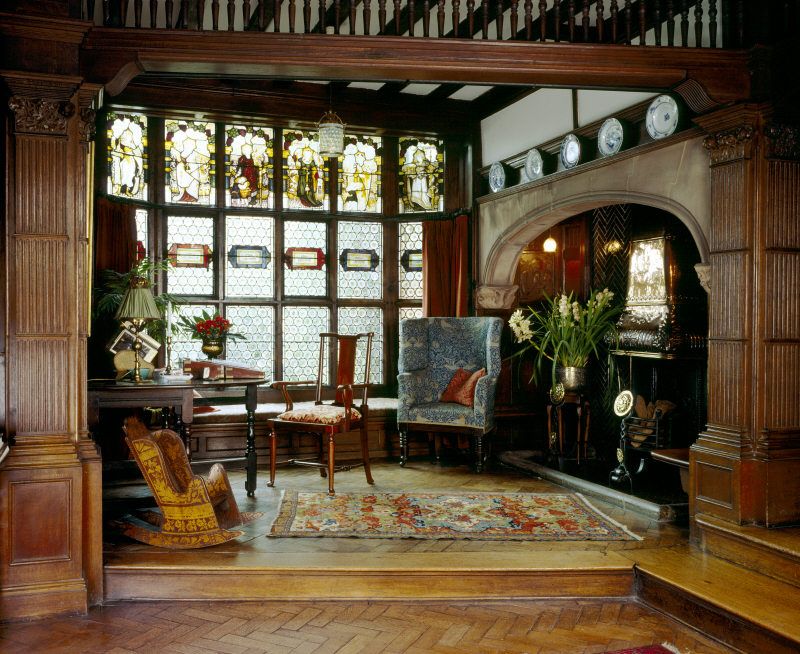
Windows: The home's windows are typically made up of smaller panes and set in multiple assemblies.
Fireplace: An Arts and Crafts home often had a very large fireplace that centered the open living space and acted as a focal point for the room.
Prominent Porches: It's rare to find an Arts and Crafts-style home without an obvious porch equipped with prominent columns. The porch is typically limited to the front door area, but sometimes will wrap around the house.
Floor Plan: The homes of the Arts and Crafts movement featured wide-open floor plans, a stark contrast to the boxy, segmented rooms of the Victorian-style homes that came before.
Common Materials
Again, in an effort to reject the design periods that came before, Arts and Crafts homes were made from natural elements. The use of local materials was encouraged, and you will often see the use of real stone, brick, and wood throughout the home.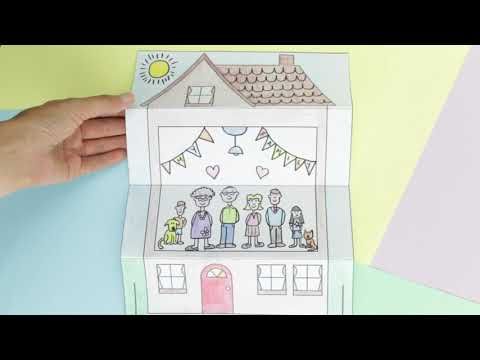
You'll also find fine handiwork features throughout the home, such as hammered metalwork and the use of authentic copper and bronze. Designers and craftsmen took pride in their work, and so an Arts and Crafts home will often feel well-made and thoughtful.
Interesting Facts
The Arts and Crafts-style home is one that inspired and directly led to many of the houses you'll spot across America today. Because the design is that of handcrafted simplicity, these homes rarely go out of style, even as design trends change throughout the years.
Though Arts and Crafts design became less popular after World War I, the ideals behind the movement (well-made, handcrafted design) remained important throughout history. You'll still find examples of Arts and Crafts-style homes and the cozy Bungalow or the Craftsman home.
House of Crafts - Murmansk, st. academician Knipovich, 23A
Opening hours
Monday, Tuesday — The Museum is closed to visitors; Wednesday - Sunday - from 11:00 to 19:00.
How to reach us
Department of Folk Arts and Crafts, School of Crafts: Murmansk, Knipovich str., 23Atel.: (8152) 45-08-60, (8152) 45-08-38e-mail: [email protected]
November 5 at 17:00 we invite you to the Department of Folk Arts and Crafts (Knipovicha str., 23a) to the grand opening of the 47th regional exhibition of amateur fine and decorative arts ...
Read more "47th regional exhibition of amateur fine and decorative arts. 5.11-25.12"
On October 28 at 14:00 in the Department of Folk Arts and Crafts (Knipovich str., 23a) an event with a master class “Together with Paraskeva” will be held. with Paraskeva". (7+) 28.10"
with Paraskeva". (7+) 28.10"
October 27 at 14:00 we invite you to the department of folk arts and crafts (Knipovicha street, 23a) for a museum weaving lesson! Visitors to the exhibition will have the opportunity to immerse themselves in …
Read more "“A shirt has grown in the field ...”. (7+) 27.10"
October 21 at 14:00 in the Department of Folk Arts and Crafts (Knipovicha St., 23a) a thematic event will be held with a master class "Alyonushka's Tales", dedicated to the 170th anniversary of the birth of …
Read more "Thematic event with a master class "Alyonushka's Tales" 21.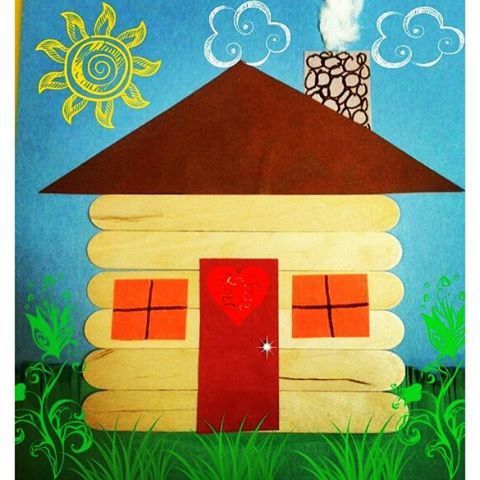 10"
10"
October 19 at 15:00 in the Department of Folk Arts and Crafts (Knipovicha str., 23a) will host an event with a master class "Matryoshkas walked along the path" (7+) Matryoshka is an unusual wooden …
Read more - class "Matryoshkas walked along the path" 19.10"
October 15 at 14.00 in the Department of Folk Arts and Crafts (Knipovicha St., 23a) will host a video lecture "Folk Art". Works of art created by the people embody beauty and artistic …
Read more
October 14 at 14. 00 in the Department of Folk Arts and Crafts (Knipovicha str., 23a) will host a master class "Magic Feather" We invite everyone to try their hand at technology ...
October 12 at 14.00 in the Department of Folk Arts and Crafts (Knipovicha str., 23a) a master class "Wooden medallion" will be held. This accessory is shrouded in mystery and always becomes more…
Read more "Wooden Medallion Master Class 12.10"
October 8 at 15:00 in the Department of Folk Arts and Crafts (Knipovicha str., 23a) will host an event with a master class "Between book pages" (7+) Bookmark - a special device in …
Read more -class "Between book pages" 8.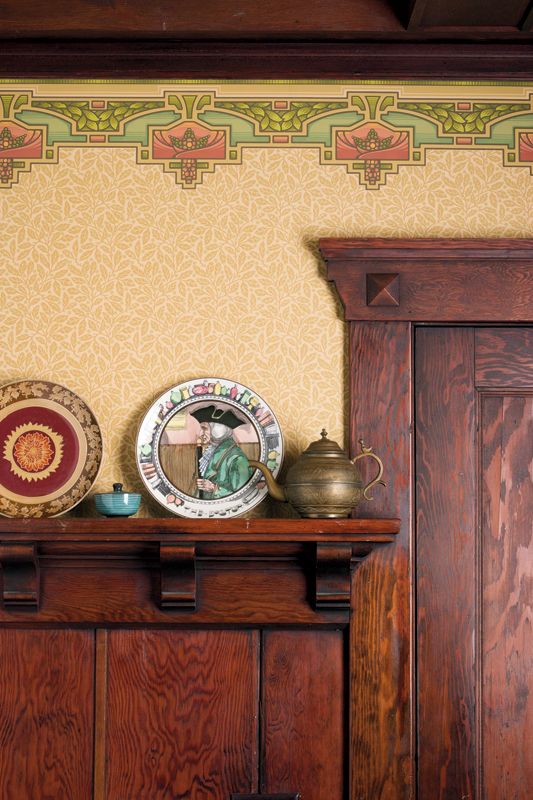 10"
10"
October 5 at 14:00 in the Department of Folk Arts and Crafts (Knipovicha St., 23a) a thematic event will be held in support of the social movement "A Drop of Life" - "Healthy ...
Read more "Artistic crafts event 5.10"About the House of Crafts
In 2015, the Department of Folk Arts and Crafts appeared in the museum (Knipovicha st. 23a). The House of Crafts (as this department is now called) has become a center coordinating the activities of masters of folk and decorative and applied arts, amateur artists of Murmansk and the Murmansk region. The School of Crafts is successfully operating, in the courses of which everyone can learn the basics of artistic crafts.
House of Crafts - Murmansk, st. academician Knipovich, 23A
Opening hours
Monday, Tuesday — The Museum is closed to visitors; Wednesday - Sunday - from 11:00 to 19:00.
How to reach us
Department of Folk Arts and Crafts, School of Crafts: Murmansk, Knipovich str., 23Atel.: (8152) 45-08-60, (8152) 45-08-38e-mail: [email protected]
November 5 at 17:00 we invite you to the Department of Folk Arts and Crafts (Knipovicha str., 23a) to the grand opening of the 47th regional exhibition of amateur fine and decorative arts …
Read more "47th regional exhibition of amateur fine arts and arts and crafts. 5.11-25.12"
October 28 at 14:00 in the Department of Folk Arts and Crafts (Knipovicha St., 23a) will host an event with a master class "Together with Paraskeva" Paraskeva Pyatnitsa - the guardian of the family …
Read more "Event with a master class "Together with Paraskeva".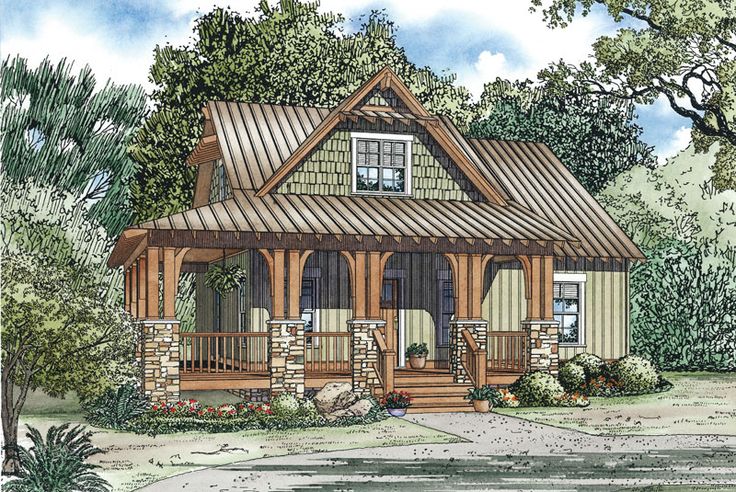 (7+) 28.10"
(7+) 28.10"
October 27 at 14:00 we invite you to the department of folk arts and crafts (Knipovicha street, 23a) for a museum weaving lesson! Visitors to the exhibition will have the opportunity to immerse themselves in …
Read more "“A shirt has grown in the field ...”. (7+) 27.10"
October 21 at 14:00 in the Department of Folk Arts and Crafts (Knipovicha St., 23a) a thematic event with a master class "Alyonushka's Tales", dedicated to the 170th anniversary of the birth of …
Read more "Thematic event with the master - class "Alyonushka's Tales" 21.10"
October 19 at 15:00 in the Department of Folk Arts and Crafts (Knipovicha St. , 23a) an event will be held with a master class “Matryoshkas walked along the path” (7+) Matryoshka is an unusual wooden …
, 23a) an event will be held with a master class “Matryoshkas walked along the path” (7+) Matryoshka is an unusual wooden …
October 15 at 14.00 in the Department of Folk Arts and Crafts (Knipovicha St., 23a) will host a video lecture "Folk Art". Works of art created by the people embody beauty and artistic …
Read more
October 14 at 14.00 in the Department of Folk Arts and Crafts (Knipovicha str., 23a) will host a master class "Magic feather" We invite everyone to try their hand at technique …
Read more "Macrame master class" Magic feather » 14. 10"
10"
October 12 at 14.00 in the Department of Folk Arts and Crafts (Knipovicha str., 23a) a master class "Wooden medallion" will be held. This accessory is shrouded in mystery and always becomes more than ...
Read more "Wooden medallion" master class 12.10"
October 8 at 15:00 in the Department of Folk Arts and Crafts (Knipovicha str., 23a) will host an event with a master class "Between book pages" (7+) Bookmark - a special device in …
Read more -class "Between book pages" 8.10"